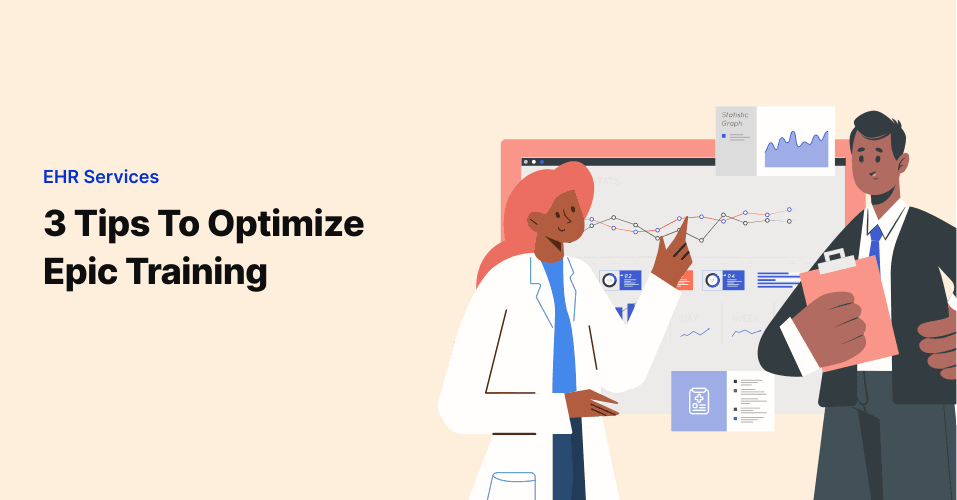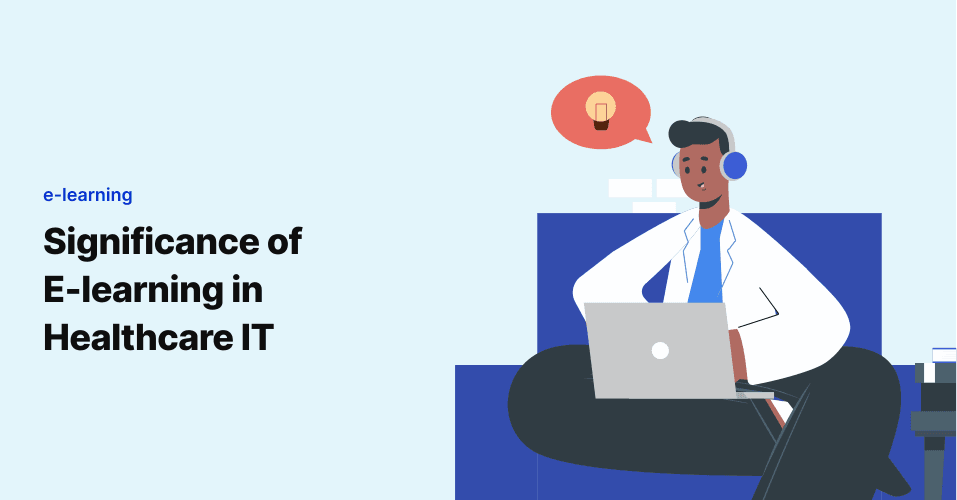
Oh, My Aching Head! Avoiding Cognitive Overload
If you’ve had the feeling your brain is so full that it couldn’t possibly handle one more thought, you’re not …

Given the breadth and depth of information required to successfully train clinical staff on an EHR, it’s important to embrace opportunities to make training as effective as possible. There are many adult learning best practices that apply to EHR training, but today we’re going to focus on a few that will provide tons of value and are easy to implement. These three tips for optimizing Epic training will support a strong Go-live and encourage participation from the busy clinicians and ancillary staff who will utilize the tool.
We often think that more is better, but when it comes to healthcare IT training, less is more. Sure, there’s no shortage of content to cover, so this may feel like a tall order. However, finding ways to focus on the most important information and distilling all the possible workflows and functionality to the most critical will absolutely help users adapt to the EHR more readily. In fact, focusing on the main components first and even providing a simple crosswalk for how the user experience varies from existing technology can set the stage for future training sessions or modules (which we’ll discuss further in a moment).
Short-form content for Epic training breaks apart a massive body of knowledge and filters down to what is most critical for a nurse, physician, intake specialist, etc., to get their respective jobs done. Expecting busy adults to sit for hours and hours on end with non-stop information coming at them isn’t realistic. There’s a lot to cover, and we’ll get to how we accomplish the full spectrum of topics to use Epic well. But cramming content into a lengthy training session under the guise of “one and done” doesn’t actually serve anyone.
Did you know that relying on a one-and-done training approach is a major risk? Without reinforcement, we forget 60% of what we learn within hours!
Discover how to overcome this challenge in our guide: How to Approach Epic Software Training and Succeed.
Since we have established that shorter, focused training classes are ideal for adult learning (and peer sanity), the key for still hitting all the important functionality for the EHR is to offer topic-based modules. This offers more easily-consumable, bite sized training opportunities to reduce information overload and better accommodate crammed clinical schedules. Not to mention, the modular approach to Epic training makes remedial review when needed very simple and far more efficient than executing another whole class.
The best way to ensure end users obtain consistent information and have easy access to EHR training content is to leverage digital learning (e-learning) for Epic training. By creating a library of training topics to cover all the critical functionality, as well as resource-specific workflows, EHR trainers can better meet clinical users exactly where they are and still deliver excellent instruction. The digital learning medium is a slam dunk option for satisfying both the shorter duration recommendation, as well as the modular approach.
We are absolutely not opposed to offering incentives or spicing up the implementation process with perks and rewards to encourage EHR adoption. However, it’s no big surprise that learning happens most organically when intrinsic motivation is established and cultivated. By honoring the importance of the internal ownership and value association that comes with intrinsic motivation, Epic trainers can optimize their instruction and the outcomes. When clinical end users understand why they’re learning Epic, what the benefits are of using the solution and how the tool will benefit their core tasks, they’re far more likely to actively participate in the training sessions and retain what they’re learning.
One of the challenges associated with Epic training is that the end users are inherently more busy and less technologically savvy than other IT implementations (or at the very least, of varying skill levels). By breaking training content into less lengthy sessions organized by subject/workflow and conveying value to inspire participation, EHR trainers can overcome many of the challenges that preclude a successful Epic Go-live.
Great Epic training isn’t just about learning—it’s about mastering. Top organizations optimize workflows and earn recognition for excellence. See how your team can level up with the Epic Gold Stars Program: What’s New and How to Excel.
Join over 3,200 subscribers and keep up-to-date with the latest innovations & best practices in Healthcare IT.

If you’ve had the feeling your brain is so full that it couldn’t possibly handle one more thought, you’re not …

Short and sweet. That’s the focus of today’s discussion around e-learning for Healthcare IT, and it’s an …

Despite all the hype, desire, tools, and incentives, why have we struggled to make the transition from formal …